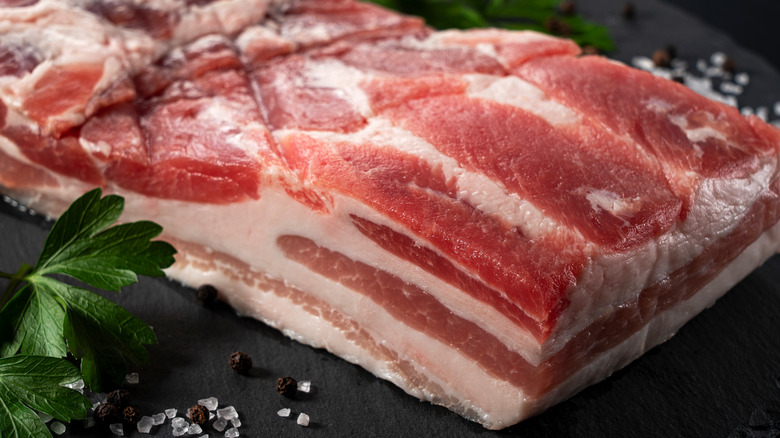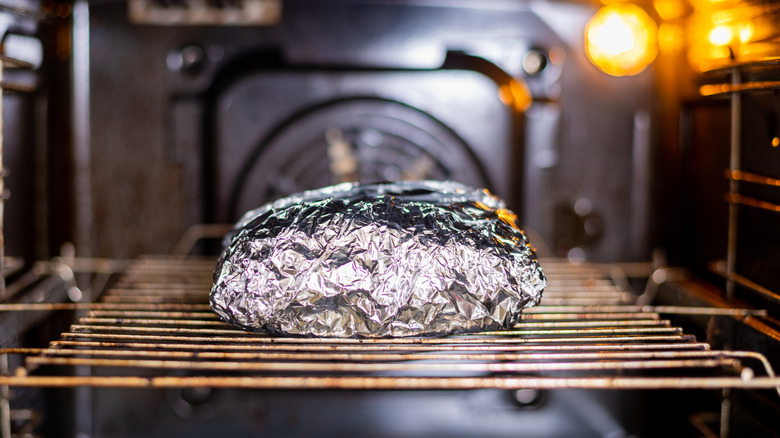Why It Pays To Wrap Pork Belly When You Cook It
Nothing is worse than tough and dry pork. And while lean cuts are especially susceptible to drying out, fatty ones such as pork belly aren't necessarily safe either. The easiest mistake one can make — with any cut of protein, but especially pork — is trying to cook it quickly under high temperatures. And the trick to a non-rubbery result, where the meat is cooked but moisture is retained, is cooking lower and slower and finding tricks to hold in the juice.
Because pork belly is so fatty, it requires a long, slow cooking process to make it tender. Of course, one can leave it in for too long, and it will grow tough as well. The key to moisture retention and ensuring a supple result is wrapping the pork belly with foil when you cook it. Doing this helps trap moisture that cooking evaporates from the cut during cooking, allowing it to stew in its own juices. This will also help the belly cook evenly so the top won't become overly browned or dry. Instead, you'll have a perfectly cooked piece of pork belly from top to bottom.
How to properly cook pork belly
As Cesar Herrera, chief instructor at Auguste Escoffier School of Culinary Arts, told Allrecipes, "You want to slowly cook the pork belly so it gets very tender and the fat has time to render to baste the meat as it cooks. This is a tough muscle, so it needs a longer cooking time at low heat to break down the tough tissue." Pork belly's need to be slow-cooked is why a smoker or oven are ideal choices when cooking.
To prepare, preheat the oven to 430 degrees Fahrenheit, and score the meat with small, shallow cuts to help dissolve the fat. Cover it with salt, pepper, and any other herbs you wish to help season it. Wrap it in aluminum foil, and allow it to roast for 30 to 45 minutes, after which, lower the temp to 320 degrees and allow to bake for another two hours, depending on how thick of a cut you have.
Once done, give the meat several minutes to rest before cutting into it so the juices have the opportunity to redistribute throughout the cut, then dig in!

